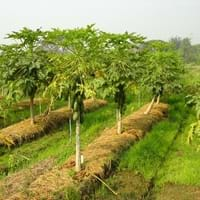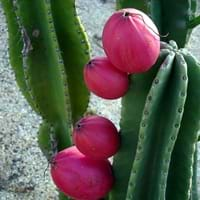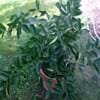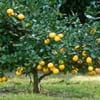Life Span
Annual and Perennial
Annual
Origin
Mexico, Central America
South America, Argentina, Brazil
Types
Male Papaya Tree, Female Papaya Tree, hermaphrodite Tree
Not Available
Habitat
tropical environments, Tropical regions
Desert
USDA Hardiness Zone
10-15
11-15
AHS Heat Zone
12-10
12-10
Sunset Zone
H1, H2, 21, 23, 24
16, 17, 21, 22, 23, 24
Habit
Upright/Erect
Upright/Erect
Flower Color
Ivory
White, Yellow
Flower Color Modifier
Bicolor
Bicolor
Fruit Color
Green, Orange, Light Yellow
Pink, Red
Leaf Color in Spring
Dark Green
Green
Leaf Color in Summer
Dark Green
Green
Leaf Color in Fall
Dark Green
Green
Leaf Color in Winter
Light Green
Green
Leaf Shape
Irregular
Toothed
Plant Season
Spring, Summer, Fall, Winter
Spring, Summer, Fall, Winter
Sunlight
Full Sun, Partial Sun, Partial shade
Full Sun
Growth Rate
Very Fast
Medium
Type of Soil
Loam, Sand, Well drained
Loam, Sand
The pH of Soil
Acidic, Neutral
Acidic, Neutral, Alkaline
Soil Drainage
Well drained
Well drained
Bloom Time
Indeterminate
Early Summer, Summer, Late Summer
Tolerances
Drought
Drought, Salt
Where to Plant?
Ground
Container, Ground
How to Plant?
Seedlings
Seedlings
Plant Maintenance
Medium
Medium
Watering Requirements
Average Water Needs, Do Not over Water, Do not water frequently, Requires watering in the growing season
Never Over-water
In Summer
Lots of watering
Lots of watering
In Spring
Moderate
Moderate
In Winter
Average Water
Average Water
Soil pH
Acidic, Neutral
Acidic, Neutral, Alkaline
Soil Type
Loam, Sand
Loam, Sand
Soil Drainage Capacity
Well drained
Well drained
Sun Exposure
Full Sun, Partial Sun, Partial shade
Full Sun
Pruning
Remove damaged leaves, Remove dead branches, Remove dead leaves, Remove shoots, Remove short branches, Remove short twigs, Requires little pruning
Remove damaged leaves, Remove dead branches, Remove dead leaves
Fertilizers
14-14-14 Fertilizer
All-Purpose Liquid Fertilizer
Pests and Diseases
Red blotch
Red blotch
Plant Tolerance
Drought
Drought
Flower Petal Number
Single
Double
Foliage Texture
Bold
Bold
Foliage Sheen
Glossy
Matte
Attracts
Ants, Bees, Hummingbirds
Birds, Hummingbirds, Butterflies
Allergy
Asthma, breathing problems, Itchiness, Itchy eyes, Red eyes, Runny nose, sneezing, Sore eyes, Swelling, Watery eyes, wheezing
Not Available
Aesthetic Uses
Not Used For Aesthetic Purpose
Showy Purposes
Beauty Benefits
Good for skin, Good for skin and hair, Improve hair condition, Making cosmetics, Not Available
Not Available
Environmental Uses
Air purification
Air purification
Medicinal Uses
Asthma, Bone strength, Cancer, Diabetes, Digestion problems, Heart problems, Inflammation, Skin Disorders
Antioxidants, Indigestion, Oedema, Wounds
Part of Plant Used
Fruits, Seeds
Fruits
Other Uses
Cosmetics, Making Shampoo, Used As Food, Used for its medicinal properties
Showy Purposes
Used As Indoor Plant
No
Yes
Used As Outdoor Plant
Yes
Yes
Garden Design
Container, Edible, Feature Plant, Fruit / Fruit Tree, Tropical
Container, Fruit, Fruit Tree, Hedges, Houseplant, Rock Garden, Wall, Tropical
Botanical Name
CARICA papaya
CEREUS hildmannianus ssp. uruguayanus
Common Name
Papaya
Peruvian Apple Cactus
In Hindi
पपीता
Peruvian Apple cactus
In German
Papaya
Peruanische Apple-Kaktus
In French
Papaye
Péruvienne d'Apple Cactus
In Spanish
Papaya
Peruana de Apple Cactus
In Greek
Παπάγια
Του Περού μήλο κάκτος
In Portuguese
Mamão
Cactus a Apple peruana
In Polish
Papaja
Peruwiański Jabłko Cactus
In Latin
Papaya
Apple Peruviani Cactus
Phylum
Magnoliophyta
Magnoliophyta
Class
Magnoliopsida
Magnoliopsida
Order
Brassicales
Caryophyllidae
Family
Caricaceae
Cactaceae
Clade
Angiosperms, Eudicots, Rosids
Angiosperms, Core eudicots, Eudicots
Tribe
Not Available
Cereeae
Subfamily
Not Available
Cactoideae
Number of Species
Not Available
Not Available
Importance of Papaya and Peruvian Apple Cactus
Want to have the most appropriate plant for your garden? You might want to know the importance of Papaya and Peruvian Apple Cactus. Basically, these two plants vary in many aspects. Compare Papaya and Peruvian Apple Cactus as they differ in many characteristics such as their life, care, benefits, facts, etc. Every gardener must at least have the slightest clue about the plants he wants to plant in his garden. Compare their benefits, which differ in many ways like facts and uses. The medicinal use of Papaya is Asthma, Bone strength, Cancer, Diabetes, Digestion problems, Heart problems, Inflammation and Skin Disorders whereas of Peruvian Apple Cactus is Antioxidants, Indigestion, Oedema and Wounds. Papaya has beauty benefits as follows: Good for skin, Good for skin and hair, Improve hair condition, Making cosmetics and Not Available while Peruvian Apple Cactus has beauty benefits as follows: Good for skin, Good for skin and hair, Improve hair condition, Making cosmetics and Not Available.
Compare Facts of Papaya vs Peruvian Apple Cactus
How to choose the best garden plant for your garden depending upon its facts? Here garden plant comparison will help you to solve this query. Compare the facts of Papaya vs Peruvian Apple Cactus and know which one to choose. As garden plants have benefits and other uses, allergy is also a major drawback of plants for some people. Allergic reactions of Papaya are Asthma, breathing problems, Itchiness, Itchy eyes, Red eyes, Runny nose, sneezing, Sore eyes, Swelling, Watery eyes and wheezing whereas of Peruvian Apple Cactus have Not Available respectively. Having a fruit bearing plant in your garden can be a plus point of your garden. Papaya has showy fruits and Peruvian Apple Cactus has showy fruits. Also Papaya is flowering and Peruvian Apple Cactus is not flowering . You can compare Papaya and Peruvian Apple Cactus facts and facts of other plants too.





